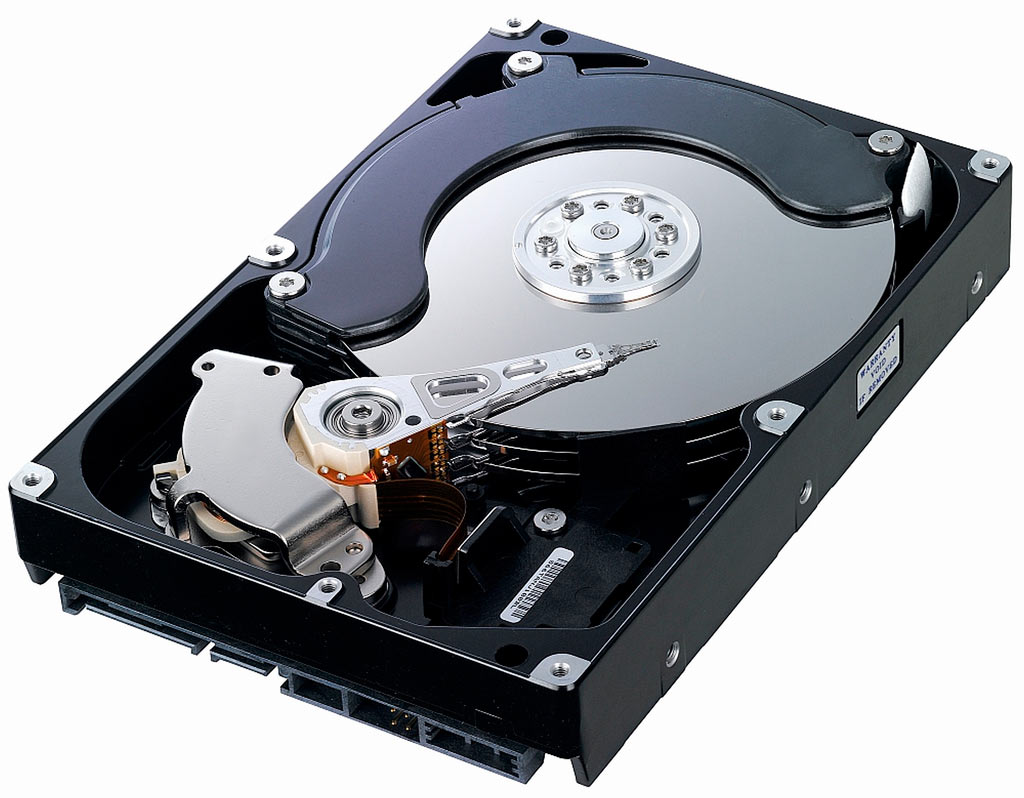Despite the advent of flash-based SSDs, mechanical hard drives haven’t died out. Why is this, and is the end of the HDD in sight?
A hard disk drive (HDD) is a mechanical storage device that stores data on spinning magnetic platters. While they’ve been around for more than fifty years, modern hard drives are unrecognisable from their early counterparts. 1956 saw the first commercial computer with a moving head hard drive, the IBM 305 RAMAC, go on sale. It was the size of two fridges, weighed more than a tonne, and had a storage capacity of just 5MB. The IBM 305 would set you back $10,000. The IBM 1301 Disk Storage Unit, released in 1961, featured heads that floated on a thin layer of air, allowing for increased storage density. However, it wasn’t until the early 1980s and the era of home computing that saw anything resembling what we would recognise as a hard disk drive. In 1980, Seagate produced the first 5.2-inch hard drive, with a capacity of 5MB, and a $1,500 price tag. Three years later, Rodime, a Scottish company, produced the first 3.5-inch hard drive, with two platters and a storage capacity of 10MB. Throughout the 1990s and 2000s, hard drive continued to grow in storage capacity. In 2005, Hitachi shipped the first 500GB hard drive, followed by the first 1TB hard drive in 2007. Today, nearly all hard drives are manufactured by one of three companies – Seagate, Western Digital and Toshiba.
The 2010s have seen flash-based solid-state drives (SSDs) go mainstream. They’re smaller, lighter, quieter, and more durable than mechanical hard drives; they’re now the go-to storage medium for personal computers. Rather than using spinning magnetic platters, flash devices like SSDs store data electronically on NAND chips, allowing it to be accessed quickly. The result is a much faster drive, although the cost-per-gigabyte of flash storage is significantly higher when compared to mechanical storage.
Looking back at older storage media, and how and why they saw a decline, could give us some clues as to the future of the hard drive. An obvious one is the floppy disk, once standard in any personal computer, now rarely even mentioned. Magnetic tape, first invented back in 1928 and used for audio before storing digital data, has never really gone away. While tapes are not as common a sight as they once were, lots of legacy data is stored on them, and they remain a cheap and efficient way to backup lots of data. What’s more, Fujifilm and IBM have recently developed a prototype magnetic tape using new Strontium Ferrite (SrFe) technology, that is capable of storing a whopping 580TB of data.
The main reason that hard drives have stuck around is the low cost-per-gigabyte, making them a decent solution for home users to back up lots of data at an affordable price. However, for general use in laptops, SSDs are the future, and for backing up large amounts of data in a commercial environment, it’s hard to beat the tape. Last year, we wrote about the decline in shipments of hard disk drives - shipments in the first quarter of 2020 were down 14% compared to the final quarter of 2019. It looks like we could be seeing the beginning of the end of the hard disk drive.
